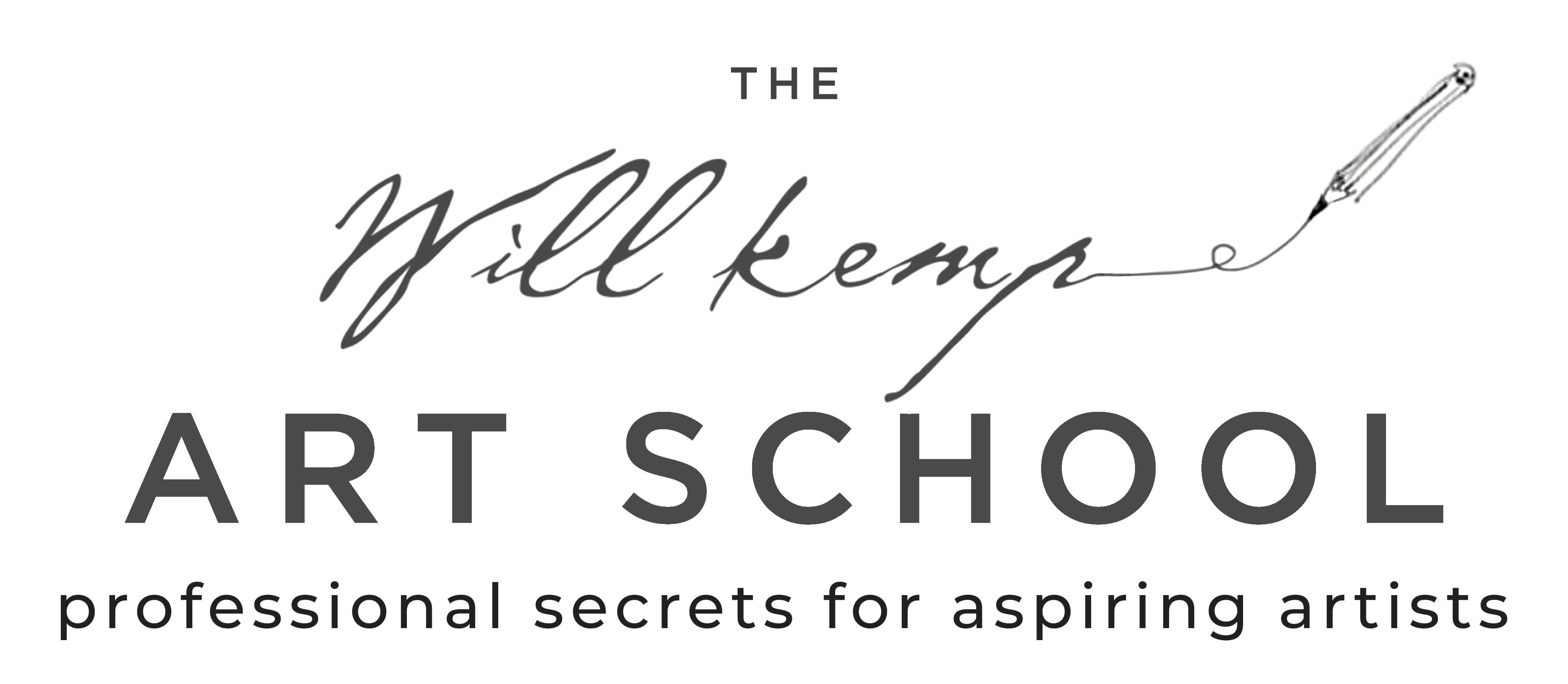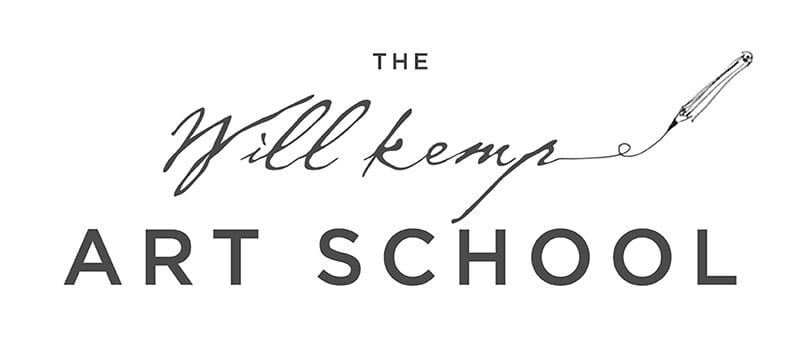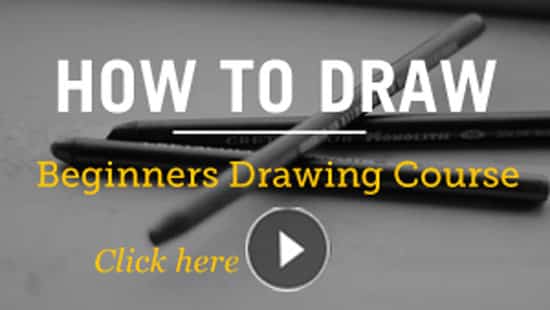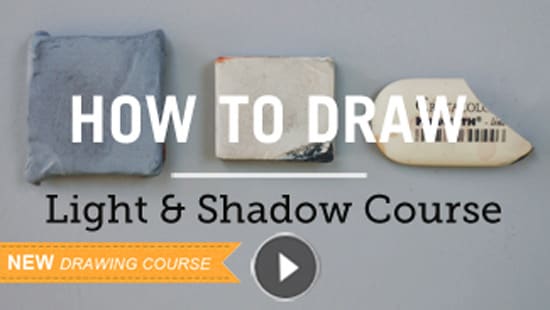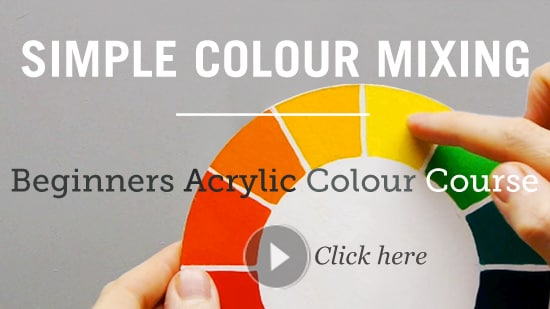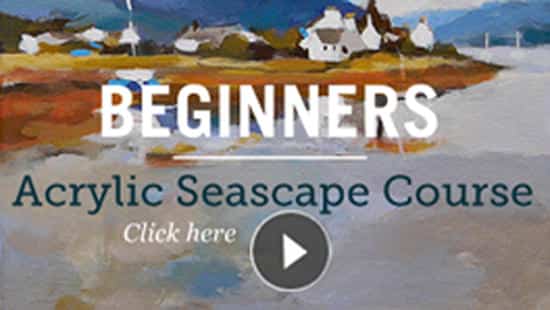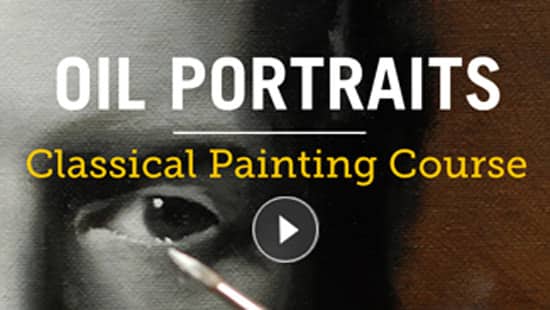Will Kemp’s Drawing & Acrylic Painting Courses
I’ve brought together the key principles from the articles on the site into a range of online video courses that go more in-depth into the fundamentals of drawing and painting.
It is a more systematic approach and has a step-by-step progressive structure to the learning process.
Below is a suggested route through the courses if you are an absolute beginner, for more advanced students there are notes next to each course indicating which course would suit your skill level best.
If you click any of the images below it will send you to a page that contains more details on each specific course.
What is the best paid course for me?
It depends where you’re starting from, but if you’ve never drawn before, or studied drawing, I would recommend the Absolute Beginners Drawing Course.
Even if you want to learn how to paint.
Why?
It will set you so far ahead, so quickly, it really is the most ‘bang for your buck’ for a set of principles that don’t change. They will help your drawing, painting and photography.
Once you start to learn ‘how to see like an artist‘ it influences everything you create.
From how to arrange a composition, to understanding (and drawing!) objects in perspective. The drawing course draws on both classical techniques and longstanding drawing fundamentals.
Often, beginners dive into painting and then get frustrated that their paintings look ‘wrong’ and give up on painting.
But the truth is, their painting skills were actually pretty good, nice colour mixing, great impressionistic brushwork – the thing that let the painting down was the drawing.
If you don’t know the basic theory of how drawing works, it will hold your painting back for years.
The drawing course has been ‘designed with painters in mind’, moving you from simple line drawings to more complicated perspective scenes.
Pro tip: You’ll be learning principles of tonal ground, darkest darks, lightest lights, that you’ll see reappearing in the Absolute Beginners Acrylic Painting Course.
Absolute Beginners Drawing Course
Skill Level – Easy/Beginner
This course offers an overview of ‘how drawing works’ looking in-depth into the reasons why you can’t draw and how to overcome self-inflicted limitations that have been unknowingly stopping your drawing progress.
Once you ‘get’ drawing the breakthrough happens in an instance. You’ll never look at objects the same again!
So after the drawing course, where do you go next?
You can either develop your drawing skills further or jump into painting.
How to Draw Light & Shadow Course
Skill level – Intermediate
If you want to develop your drawing skills further and experiment with new materials such as charcoal and chalk you should look at the How to Draw Light & Shadow Course.
This course looks a the stage in-between pencil drawing and painting – the skill gap between drawing and painting.
There can often be a missing link where accomplished drawers can become discouraged with painting due to the lack of control of a brush, confusion of colour mixing, and frustration with quick drying time. This course aims to teach techniques that help to bridge the gap.
Now, it doesn’t sound that glamorous! but there are hidden gems in this course.
Discover how to create the ‘sfumato‘ effect in your drawings (used by Leonardo Da-Vinci in the Mona Lisa) and how you can use light and shadow within your compositions.
Pro Tip: This is how a Classical Atelier painting curriculum would progress, from pencil to charcoal, before introducing painting. This course can be particularly helpful for oil portrait painters looking to study the Classical black-and-white portrait course (details below) as many of the same principles for a good foundation of portrait painting apply.
What if I’m eager to start painting?
For the best introduction to the basics of classical painting using Acrylics, I would recommend the new Absolute Beginners Acrylic Painting Course.
Absolute Beginners Acrylic Painting Course
Skill level – Easy/Beginner
This painting course has been designed with painting procrastinators in mind!
I want to engage aspiring artists who have been putting off their creative adventures and build confidence by slowly introducing painting concepts one at a time.
It goes through step-by-step practical painting demonstrations that introduce you to all the fundamental painting techniques.
After you’ve got a grasp of the basics the next steps depend on if you want to paint more Impressionistically, more Classically or need to improve your colour mixing.
Once you understand the basics of drawing and painting often the next step is to develop your understanding of colour mixing.
Simple Colour Mixing Course
Skill level – Beginner/Intermediate
After drawing, a simple colour mixing course is the next important skill to master as a painter.
It doesn’t matter if you’re painting portraits, still life’s or abstracts. Having a good foundation of how colours work together is key, and learning how to mix the colour you’re after will help in all aspects of your paintings.
In the Absolute Beginners Acrylic Course, you would have been introduced to a basic 5 colour palette, this course expands on that palette and goes deeper into the colour theory behind successful colour mixing.
Impressionistic Seascape Course
Skill level – Easy/Beginner
A simple introduction to painting using a limited palette. A great choice if you’ve worked through the drawing course or beginners painting course and want to paint with a looser more impressionistic feel.
We look at using warm and cool hues. It starts to introduce colours and simple painting techniques. You’ll start to notice similar ideas and phrases such as ‘tonal ground’, ‘negative space’ and ‘aerial perspective’.
Art of Acrylics Still Life Course
Skill level – Beginner/Intermediate
(Pleases Note: This course is currently being updated for 2016)
This course goes in depth, from start to finish on a single still life painting using Classical techniques. This was the first course available on the site as is currently being updated for a new version in 2016.
From preparing the canvas, drawing out, to adding glazes to the final stages of the painting. If you’ve never painted before you will be able to follow the course as it introduces new colours slowly so you learn about the importance of value & tone, before having the added complications of colour mixing.
It also shows you to build a painting up in layers for a realistic, subtle approach whilst still using acrylics.
Still Life Masterclass with Acrylics
Skill level – Intermediate/Advanced
This course looks more in-depth at how to work with multiple layers of glazing with still life subjects.
I created the Still Life Masterclass Course with Acrylics, to help aspiring artists to bring their paintings to a more professional finish.
It looks at more complicated subjects of reflective surfaces such as silver, ceramic and mahogany.
The course looks at two studies, the first is a silver Goblet using only two colours so students at all levels can create some really fantastic results, the second study is more challenging using a wider range of colours and optical glazing techniques.
After experimenting with still lifes, learning the basic principles of colour mixing, brush handling and the working properties of acrylics you can move on to some more advanced lessons in acrylic portraiture.
Acrylic Colour Portrait Course
Skill level – Intermediate/Advanced
This Acrylic Colour Portrait Course goes through the techniques and methods of how to paint natural looking skin tones with Acrylics. It looks at 3 different colour portraits and the classical techniques you can use to develop your portrait skills.
What about Oil Painting?
Many of the techniques throughout the teaching stem from my training in classical oil painting so if you’ve been working through the courses you’ve been developing oil painting skills by stealth!
The next course brings together sfumato techniques of light and shade (from the how to draw light and shade course) the drawing basics of accurate observation (from the absolute beginners drawing course) and introduces the basics of an ‘in-direct’ oil painting method.
‘In-direct’ painting is where you build up the painting in multiple thin layers, slowly adding more refinement and details to the painting.
Black & White Oil Portrait Course
Skill level – Beginner/Intermediate/Advanced
The Skill level above could be a bit confusing! to clarify:
Skill Beginner – The oil painting techniques are taught as if you are an absolute beginner to oil painting. Even if you’ve never painted in oils, this course guides you through the fundamentals needed to create a classical Grisaille portrait.
Skill Intermediate – You would need the existing drawing skills to draw a portrait – the course doesn’t cover portrait drawing techniques. This course is perfect for students who have experience in drawing, want to develop their painting portraiture but don’t know where to start.
Skills Advanced – Would be the developing of painting skills through the painting methods, However, without any drawing background, I wouldn’t advise this course.
If you look at any Classical portrait under the surface is a hidden structure, a Grisaille underpainting – a fully developed picture in tones of grey.
This black & white painting lays the foundation for future portraits if you want to move onto colour, but creates a stunning portrait in its own right.
What if I want to add colour glazes to my oil portraits?
There is a new colour glazing course just launched in June 2016, looking specifically at colour glazing techniques for portraits.
What about Sketching techniques?
I have two courses that help develop your sketching observation skills as an artist.
The first looks at how to develop the habit of Urban Sketching for Beginners – sketching the everyday environment around you and the other course looks and Landscape Sketching for Beginners on location.
What about Landscape Painting with Acrylics?
I’ve developed a new acrylic landscape painting course that looks at creating an impressionistic Venetian Sunset, working larger scale with Acrylics.
Hope this helps to give you an overview of the courses and looking forward to seeing your completed masterpieces!
Cheers,
Will
What my students say:
“Thanks for this video Will. The detailed organisation, preparation and finishing are not usually available in “normal” art videos so it was very helpful to say the least. Yes, my painting turned out far better than I could have imagined -”
Celine – Norwich U.K
“I love the finished painting very much and probably will try to paint it again for the second, third time.”
Naruemon – New York“I have really enjoyed the drawing school and it has made me draw more than I normally would. That is what I like about it – just the reason to get on with it.”
“What an exceptional teacher. I’ve always had a natural talent but the techniques I have learnt through this course have improved my drawing beyond belief! and in such a short amount of time!! Thank you very much!!”
“Brilliant! Calm, concise…what a pleasure it was to do this course! I have done other art courses but this is the only one that has seen such a huge improvement in my drawings. This is down to Will being very clear without patronizing and having a nice humour throughout. Thank you!”
“Will’s methodical and systematic approach to rendering and drawing is ideal for those who need to brush up on their drawing skills or for the absolute beginner who finds learning to draw/paint daunting.”
“Will does a great job of breaking things down into digestible bits and pieces. I am a mechanical artist and my approach is different (it has to be). The problem I always have is simplifying artwork to have a more relaxed, yet realistic look. My attempts at fine art drawing tend to look too mechanical. This is the best presentation I have seen that breaks things down logically, doesn’t get too complicated, yet still offers methods to bring everything together to make it doable for someone just learning. I think this course would be terrific for those who would like to be able to do some recreational drawing, but perhaps does not know where to start, so he or she can learn enough to get into it, and perhaps even build from there. This course was just wonderful!”
Will uses a friendly approach and a soothing tone. Drawing is something that many people would like to do, but are afraid of it. Will eases one into the subject matter in a friendly manner.”
“Will instructs at a good pace with a lot of details. This is a great course for any beginner!”
Eric“Great, easy to follow instructions
I enjoyed this class very much.
The instructions are very clear, and explanation of each step helped to understand the whole process. I would recommend this class to anyone who would like to start painting. This technique could be applied to other subjects.”
Anita
